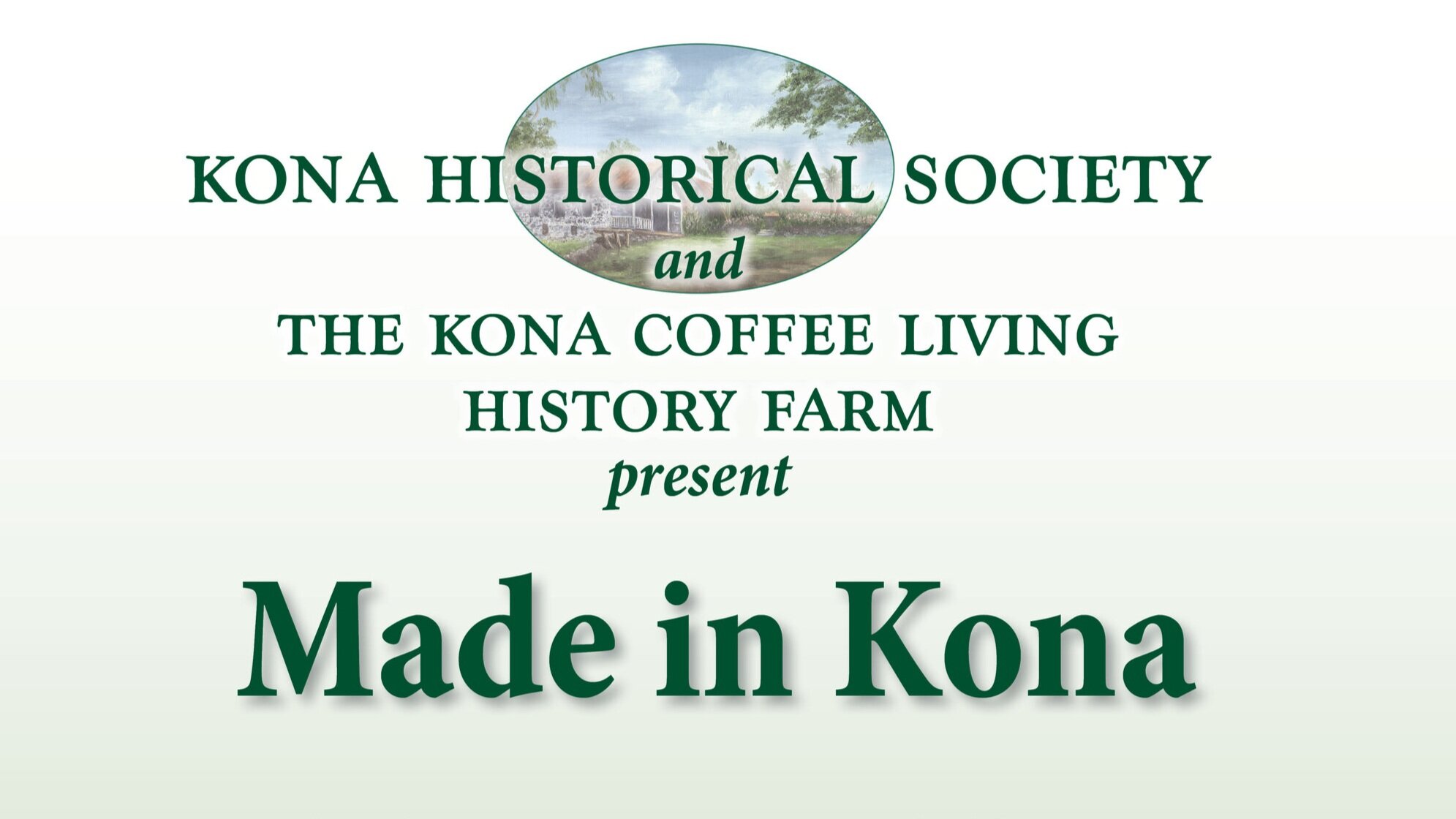The unique landscapes of Kona provided kamaʽāina and residents—new and old—opportunities to produce some of the most sought after products that were proudly “Made in Kona.” This entrepreneurial spirit attracted hardworking and independent people who helped build the foundations of Kona’s community today.
If you enjoy this exhibit, please make a donation by clicking on the Donate Button below:
Kona’s Tobacco Industry
Interior of a tobacco farm building of the Kona Tobacco Company.
Kona’s Sugar Mills
Sugar mill and railroad tracks of Kona Development Company on Hualalai Road circa 1920.
1891: Sugar wages $9/month
1869: Kona’s first sugar plantation was started by Judge C. F. Hart; a small mill was erected and 12 horses were used to pull the rollers.
1926: The end of commercial cultivation in Kona.
Sharing Kona’s Products with the World
Milk & Butter
ʻŌpelu
Tomatoes
Lauhala
Oranges
“This district is famous for oranges, coffee, and pineapple, and silence.”
Isabella Bird, Six Months in the Sandwich Isles, 1873.
Kona’s Coffee Origins
Woodblock Print by Hiroki Morinoue of Kona’s traditional coffee farming tools.
1828: First coffee trees introduced to Kona from Manoa by the Reverend Samuel Ruggles.
1845: First export of coffee 248 pounds.
1871: John Gaspar built the first coffee mill at Napoʻopoʻo.
1890: Brunner planted 100 acres of coffee near the present Manago Hotel. Pulping coffee required a large amount of water, a resource often limited in Kona during the coffee picking months.
1898: 6,393 acres in Kona being used for coffee production, 555 of them in South Kona.
1928: Boom year for coffee with prices at $0.28 per pound.
Koa: A Prized Wood
Kona’s businesses, large and small, were built upon or drew inspiration from Kona’s early entrepreneurs.
What do you think the future holds for Kona’s commercial industries?
What inspires Kona’s entrepreneurs today?
What are some new industries developing in Kona that reflect our community’s unique sense of place while remaining on the cutting edge of innovation?




